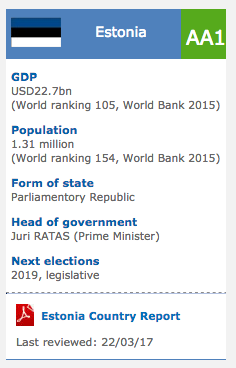Uzbekistan: Uzbekistan Customs and Traditions
2011/06/25
Customs and Traditions of Uzbekistan
Customs and traditions of Uzbek people have been formed for centuries. They are rather distinctive, impressive and different, date back to various epochs and religions. Most of rites are regarded to the birth and upbringing of child, weddings, engagements and etc.
Traditions of hospitality
Uzbek dishTraditional oriental hospitality is not alien to people of Uzbekistan. The skill to keep good house in Uzbek families is valued higher than the wealth of a table and prosperity of the family. Not to receive the guest meant to disgrace the family and clan.
Hosts welcome esteemed guests at gate. As a rule, men shake hands to each other and ask mutually about health, business and other things. It is appropriate to greet women with slight bow, attaching right hand to the heart. Then guests are invited inside and conducted to the most honorable seats at the table, or dastarkhan in Uzbek. By the ancient custom men and women should seat at the separate tables, but this custom is preserved in whole only in suburbs.
Any meal begins and ends with tea drinking. At the beginning the table is served with sweets, baked goods, dried fruits, nuts, fruits and vegetables, then it is served with snacks and at the end – with pilaf or other festal dish. The host of the house pours the tea. The traditional element of hospitality is the peculiar small amount of tea to be poured – the more honored guest, the less amount of tea is in his cup. This custom is explained in such way – the more guest ask for more to the host – the better. It is the sign of respect to the house.
Beshik-Tui
Beshik-TuiBeshik-Tui is the great holiday, devoted to the ancient rite of cradle, which is preserved from times immemorial and still is one of the most popular in Uzbekistan. On fortieth day after birthday of the child relatives of the young mother bring richly decorated cradle – “beshik” and everything necessary for a newborn and bread, sweets, toys.
By traditions, while guests enjoy and treat at the festal table, in the nursery elder women conduct the rite of first swaddle and placing in the “beshik”. The ceremony is finished with a presentation of a child, during which invited guests present the child with gifts.
Khatna-kilish
This is the name of the rite of circumcision. It is also called as “Sunnat Tui”. Preparations for this rite begin long before the event: members of family sew quilts, covers, dressy-look garments. Before the rite old men in the circle of aksakals read Koran and say their blessings and wishes. In the evening all relatives and guests are invited to the tui or “the wedding”. It is appropriate to present the boy with symbolical gifts: money (wealth), sweets (prosperity), expensive clothes, weapon and etc.
Fatikha-tui (Engagement)
Fatikha tui - EngagementUzbek people as well as all Muslim nations have very scrupulous attitude to a marriage. Marriage occurs only with the permission and blessing of parents. Usually before the wedding ceremony there is the “fatikha-tui” – engagement or betrothal.
Sovchi (matchmaker) appoint the day when guests should come in the house of a bride. Relatives of the bridegroom bring many gifts to relatives and parents of the bride.
After stating the purpose of coming, matchmakers do the rite of “Non sindirish” – “Bread Break” and appoint the wedding day. Relatives of the bride present relatives of bridegroom and matchmakers with gifts.
Nikokh-Tui (Wedding)
By tradition Uzbek people celebrate weddings very richly, Nikokh Tui - Weddingcheerfully with peculiar splendor and abundance of guests. The festivities begin since the very morning, when in the houses of bridegroom and bride hosts prepare the rich dish – festal wedding pilaf. The wedding ceremony begins in the house of bride, where bridegroom with friends and relatives comes. The bride waits in special room, where only mullah can come in. He asks her marital consent and then reads the prayer – “nikokh”. The marriage is deemed to be effected after this rite.
After this the bride say goodbye to relatives, and meanwhile friends of bridegroom load her dowry. Then friends, relatives and yanga (special daughter-in-law) lead the bride out of house, seeing husband’s house. In the husband’s house women welcome the bride, singing traditional wedding songs. In front the door they strew “payandoz” – white road, on which the bride should enter the house. She stops before the door and makes “ostona salom” – the bow to the new house. Women strew her with flowers, sweets, money (in each place is in different ways), as if wish her life be beautiful and rich.
Early in the morning after wedding the rite “Kelin salom” (speech of welcome of the bride) occurs. Young wife should welcome every guest, bowing from the waist to him/her, and guests should present her with gifts and greetings.
Traditional clothes
National clothes say about rich cultural heritage of Uzbek people, about its customs and traditions, life style and deep historical roots.
Man’s clothes
Man's ClothesNational men’s clothes is the quilted robe – chapan, tied with shawl. Dressy look garments were tied with belts, richly decorated with embroidery, silver pendants and buckles. Everyday coats were tied with long shawls. Traditional men’s cap is tubeteyka of various types: duppi, kalpon, kallapush and traditional footwear is high-boots, made of thin leather.
Kuylak is the men’s shirt of straight cut.
Ishton is men’s wide trousers, narrowed at bottom.
Chapan is the unbuttoned quilted robe with slits at each side for ease of walking.
Woman’s clothes
Woman's clothesTraditional Uzbek woman’s suit consists of plain tunic-dress of khan-atlas and wide trousers. Over these clothes women wore robes like man's chapans. Dreassy look garments were made of atlas fabric and richly laced with golden thread.
Woman’s headwear includes three things: cap, kerchief and turban.
The indispensable part of national clothes of Uzbek women were gold and silver jewellery: earrings, bracelets, beads.
- Uzbekistan News
-
- AFGHANISTAN: UNWTO: International tourism – strongest half-year results since 2010
- RUSSIA: LUKOIL launches main facilities at Uzbek gas field
- KAZAKHSTAN: Uzbek, Kazakh law enforcement agencies sign co-op memo
- UZBEKISTAN: National energy-saving company to appear in Uzbekistan
- UZBEKISTAN: Former deputy PM named Uzbekistan Airways head
- UZBEKISTAN: Uzbekistan to remove excise tax on some imported products
- Trending Articles
-
- AUSTRALIA: Queensland Bauxite Gains State Approval of Mineral Development Work Program
- CANADA: Canadian businesses warn Trudeau against Trump-inspired NAFTA rewrite
- TANZANIA: Critic of Tanzania's Magufuli moved to Kenya for treatment of gunshot wounds
- CANADA: NAFTA renegotiation could be double-edged sword
- NIGERIA: Nigeria: Obasanjo to Commercial Banks - Lower Interest Rates for Farmers
- CANADA: If NAFTA talks turn ugly, economic cooling could turn into a deep freeze




.gif?1356023993)







